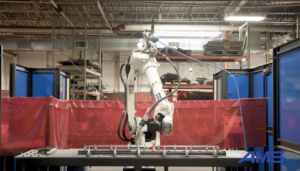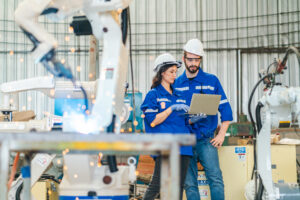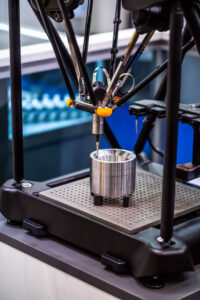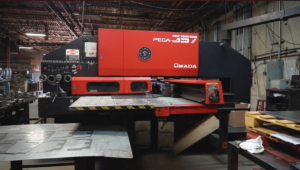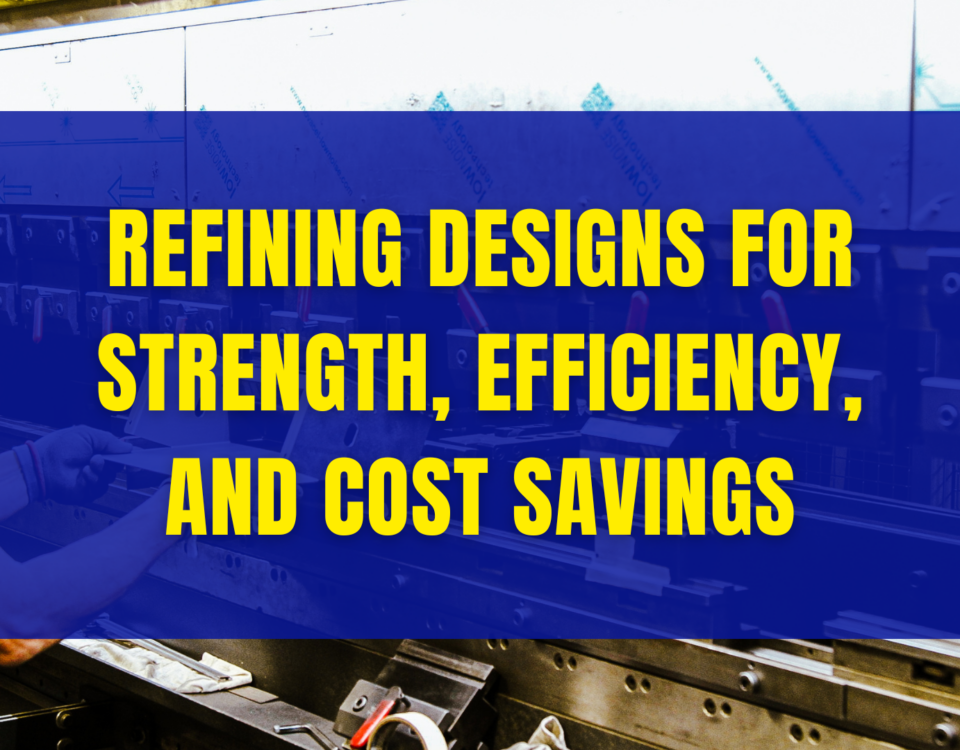Metal Forming: Shaping the Future with Precision
September 25, 2024
Metal Joining: Building Strong Connections
November 6, 2024New technology is transforming the metal stamping industry. Automation, robotics, and smart manufacturing are making metal stamping faster, more precise, and more flexible. Let’s explore how these advancements are changing metal stamping and what they mean for the future of metal fabrication.
Automation and Robotics
Automation is one of the most important changes in metal stamping. Automated systems and robots are transforming how we handle metal stamping projects.
- Increased Efficiency: Automation uses machines and technology to do tasks that humans used to do. In metal stamping, robots handle large production volumes with greater speed and accuracy. Robots can feed metal material into stamping presses, do the stamping, and remove stamped parts for inspection.
- Consistency and Precision: Robots reduce human error. They work with high precision, making sure each metal component is stamped exactly to the needed shape. This makes the process faster and results in high-quality stamped parts, which is especially important for industries like aerospace and automotive.
- Cost Reduction: Automation lowers labor costs by reducing the need for human workers. It also cuts down on material waste, as machines can produce metal components with consistent quality, reducing defective parts.
Smart Manufacturing
Smart manufacturing is another trend-changing metal stamping. It uses the Internet of Things (IoT) and data analytics to improve the manufacturing process.
- Smart manufacturing involves using sensors in stamping equipment. These sensors allow for real-time monitoring of the production process, like machine temperature, pressure, and speed. This makes sure that metal material is processed efficiently, helping maintain the quality of each stamped part.
- Predictive Maintenance: Smart manufacturing also allows for predictive maintenance. By analyzing data from the sensors, manufacturers can predict when machines will need repairs or maintenance. This helps avoid downtime and keeps the production line running smoothly, ensuring that every metal stamping project is completed on time.
- Optimized Production: Data also helps manufacturers fine-tune the production process. By watching the performance of stamping presses, they can adjust settings to make sure every metal component is made with the highest level of precision, achieving the desired shape with little waste.
Additive Manufacturing (3D Printing)
Additive manufacturing, also known as 3D printing, is changing the way custom metal stamping is done. While traditional stamping is best for making lots of parts quickly, 3D printing offers new
opportunities for more complex, custom designs.
- Complementing Traditional Stamping: 3D printing allows manufacturers to create prototypes and custom parts that may not be possible with metal stamping alone. This is helpful for industries like medical devices, aerospace, and electronics, where more complex geometries and types of metals are needed.
- Prototyping and Customization: Additive manufacturing also helps companies produce small batches of custom parts before starting large-scale production with metal stamping. It’s a flexible option for testing designs and making adjustments. It’s especially useful when working with materials like stainless steel and aluminum, which offer corrosion resistance.
Industry Implications
The future of metal stamping looks bright because of these technological advancements. Companies that use automation, robotics, and smart manufacturing will improve their efficiency and stay competitive by delivering high-quality stamped parts.
- Enhanced Capabilities: These technologies allow for more complex designs, faster production, and higher precision. Industries like automotive, aerospace, and medical devices rely on precision metal stamping, and these advancements help meet the demand for custom metal components.
- Sustainability: Smart manufacturing also makes metal stamping more sustainable. Efficient machines, less waste, and better production processes mean less energy is used, and fewer raw materials are wasted. This contributes to a greener metal fabrication industry.
- Future Trends: As technology continues to improve, automation and smart manufacturing will drive more innovation in metal stamping. Additive manufacturing will likely play a bigger role in customization, offering more options for industries that need specialized metal materials for unique projects.
For more insights into how AMS Metal is embracing the latest technology, check out their blog on tube laser cutting. AMS Metal stays ahead of the curve by using cutting-edge machines like the Ermaksan Fibermak Gen-3 to deliver high-quality, precise metal components.
Shaping Tomorrow
By embracing these innovations, the metal stamping industry is ready to meet the needs of many sectors, offering efficient, precise, and customizable solutions for the modern world.


